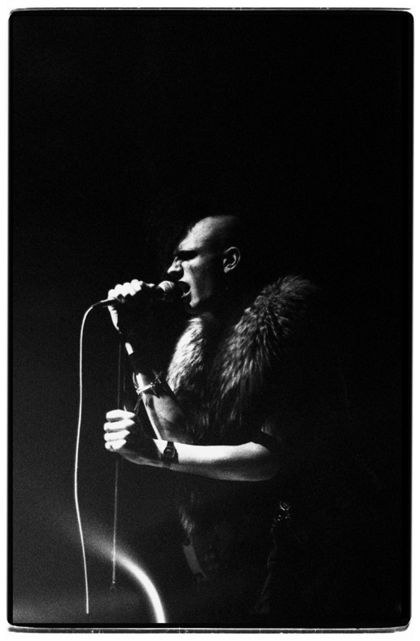My first flat in London was a little terrace in New Cross, near Goldsmiths' College, alma mater of Lucian Freud, Malcolm McLaren, John Cale and Mary Quant. Proximity to the college had its benefits: there were two(!) comic shops and a decent live music venue. Relative proximity to The Den meant Millwall fans would stream through like a horde of orcs on match days.
I lived there in 1986 with two of my workmates from the HMV Store in Piccadilly: Ian (who went a bit funny after doing an EST seminar) and Doug. Doug the Goth.
Doug was tall and quite handsome and his parents would visit occasionally from somewhere in the home counties, each time leaving a stock of pot noodles. It would be fair to say he was a total mother's boy.
He didn't see himself that way, of course. He saw himself as a dark adventurer on the blasted romantic wastelands, and he was simply in love -- in a somewhat sexual way -- with several goth bands and their lead singers. "If I'm not back by tomorrow that means Wayne Hussey's got his leg over!" he chirped once on his way out the door to a Mission show outside London.
The Mission always sounded silly to me. But Doug's other big musical squeeze, Fields of the Nephilim, were just terrible. I couldn't understand how anyone could like such dreck. But there was a lot I didn't understand. When Doug's mate -- taller, more handsome, stetson -- would come around and solemnly regale us with his ghastly poetry, it was truly all I could do not to giggle.
I developed a theory that Goth stood out from other musical movements in having no associated culture of any merit at all. Hip hop, punk rock, even New Zealand's southern psychedelic flowering, all informed their own art, film and writing. Goth had nothing, as far as I could see.
Perhaps I was too harsh; projecting my own unease about dressing-up onto the goths. Perhaps Goth did have its own cultural landmarks. Perhaps it's a phase: a few of my friends had their Goth years before moving on to other things, such as being fine reggae DJs.
But this Guardian story on how Fields of the Nephilim are still out there plugging away, 30-odd years on from that flat in New Cross, offers a different perspective:
... that the Nephilim are beneficiaries of one of the weirder aspects of the scene: the dogged refusal of goths to stop being goths despite their advancing years. Instead of doing what many youth tribes do – abandoning the subculture in middle age – they prefer to "negotiate adulthood" as goths, in the words of Paul Hodkinson, senior sociology lecturer at the University of Surrey by day, goth DJ with a penchant for Bauhaus' Dark Entries by night. His research on ageing goths was published in The British Journal of Sociology. "There's a very large number of people who are staying involved as they're getting older and also perhaps a comparative lack of younger people coming into the scene," he says. "There are younger people that dress in a gothy way and listen to what you might think of as gothy music – emos and related scenes – but I think there's a bit of a disconnection between those younger goths and the cohort of goths who are becoming older. You're not just talking about some individuals who are getting older in an otherwise young scene, you're talking about a whole scene that's collectively growing up."
I can't help but wonder if Doug is still there too -- taking time off from his management job, getting some slap on and following the Nephilim across Europe once a year. And if he is, well, I trust he's getting his leg over.
